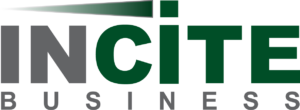Business Relationships – Build Them At CFSA!
Next week I will be heading to Carlsbad, California to attend the Community Financial Services Association annual conference and I’m starting to get excited about making the trip. At first, I thought it was because I will be escaping Kansas City’s winter for a few days and be able to run outside without 2 or 3 layers of clothing. Then I started thinking it was more than just an escape. I am excited to reconnect with some co-workers from a prior life and see some others in the industry that I haven’t seen in a while. It’s interesting because this will be the first time I have attended as a business coach instead of an operator/customer. Will my approach to the conference be different? Will I have to work harder at networking? What do I hope to gain from this year’s conference? The more I think about it, the more I believe that events like these are the perfect opportunity to create and strengthen relationships. As someone who is focused on helping others improve and grow their businesses, this is a perfect opportunity for me to meet others that will help me along this path.
Working with the Alternative Financial Service Providers Association and their “Ask A Pro” segment has given me the opportunity to meet hard-working business owners who need a little help in different areas. In some instances I can offer valuable guidance and direction, but there are a few instances when I would reach out to my existing contacts for additional help. This has made me realize the value of fostering business relationships. Over the years, I have had the pleasure of meeting many excellent experts with different areas of expertise. Its been valuable to me as a consultant and business coach to have access to so many experts. I also now know that there are relationships in a few areas of expertise that I need to develop. This will be one of my key objectives at the upcoming CFSA conference – meeting others in the industry with the expertise and desire to help others grow.
My other key objective at the conference is to gather information that will be important to business owners as they continue to grow their business in these turbulent times. Based on my conversations with many in the industry and my personal opinions, the key areas I will be focused on will be:
- Alternative Lending Products – are installment loans the best option to diversify a payday loan portfolio?
- CFPB Rules – will the agency strategically publish the rules before or after the conference?
- Banking Relationships – what banks are still partnering with businesses in the industry?
- Omnichannel – are there any options for smaller players to provide a seamless storefront and online customer experience?
- Data Analytics – what options are out there to improve risk management, customer performance, etc.?
- Trends – what are the newest trends for the industry? What does 2015 – 2016 look like?
The industry is in an interesting time with fast-moving technology improving the customer experience, while the regulatory overhang is making many hold their breath and consider their future. I am excited to have the opportunity to attend and hopefully get some clarity on many of these issues. If you are attending the conference and would like to compare industry notes, please contact me. If you are unable to attend, but would like to discuss my insights and experiences from the conference, definitely reach out to me. As always, I am here to help you grow your business!
